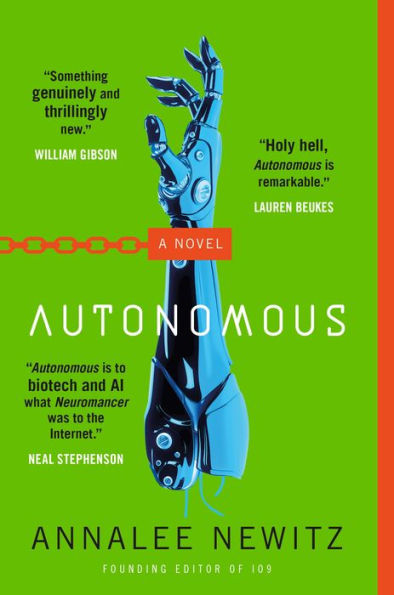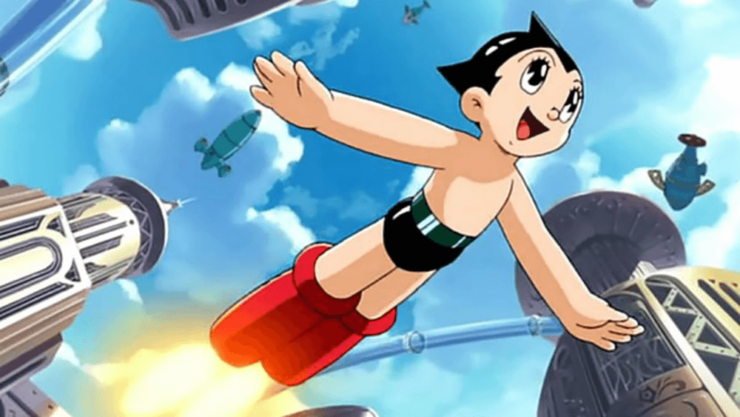After losing to Angelique Kerber in the Australian Open a couple of years ago, tennis star Serena Williams said, “As much as I would like to be a robot, I am not. I try to. But, you know, I do the best that I can.”
The implication is that if Williams were a robot, she would be a perfect, match-winning machine. A consequence of being human is our inherent fallibility. How many Western narratives are built on this very premise of robotic perfection and efficiency? The Terminator can, well, “terminate” with such precision because the T-800 is a cyborg from the future. Marvel’s Ultron is a superpowered threat because of the cutting-edge technology that goes into creating the villain. Ava’s advanced programming in Ex Machina makes us recognize that, of course, the A.I.’s cunning can outwit a human. And let’s not even talk about the menacing efficiency of the security robots in Chopping Mall! Point is: if we’re looking for reference material to support the thesis that “technology is scary,” there’s plenty at our fingertips.
But there’s also a lot that goes the other way, both in fiction and movies. Robots don’t have to be exacting killers. Technology has the power to revive loved ones or to create a loyal friend. Cybernetics can enhance and preserve humanity without ultimately destroying it. There are plenty of stories like this, and some of the best originate from Japanese media. Manga and anime have, for years, shown us the brighter side of technology. Indeed, humans still do wrong, and plenty use technology to serve their nefarious means, but for many protagonists, robotic creations operate as colleagues, or, in some cases, friends and family—wellsprings of love and happiness.
Think about Dr. Tenma in Mighty Atom (aka Astro Boy) creating Astro, a robotic version of his lost son. After a period of rejection (a period depicted differently across various reboots and remakes), Tenma recognizes that Astro’s superhumanity is an asset, and that robots are not necessarily without emotion. A bond forms, and Astro becomes a force for good in the world. This symbiosis, in which human and machine help and depend on one another, is hardly unique to Mighty Atom. Examples of this kind of positive relationship exist in many iconic anime and live-action Japanese media, including Macross, Gundam, the Super Sentai series, and Neon Genesis Evangelion, to name only a few. In the U.S., as these shows were redubbed and reformatted into hits like Robotech and Mighty Morphin’ Power Rangers, our roboculture experienced its own Japanification, in which the near-perfect robot was not a machine of terror, but a respected companion.
So, why does so much modern Japanese media feature the trope of the beneficial robot? The answer to that question lies centuries in the past, starting with one instance of cultural blending, followed by intense isolation. For more, it is most helpful to turn to Timothy N. Hornyak’s book Loving the Machine: The Art and Science of Japanese Robots. In this work, Hornyak traces the history of Japanese robots back to their protoculture, demonstrating that positive interplay between human and automata is woven into the tapestry of Japan’s history.
The Japanese Edo Period lasted from 1603 to 1868. During this time, the country was primarily isolationist and enjoyed economic prosperity, a booming arts industry, and relative peace. All of this can be seen as a reaction to ever-encroaching European Christianity, which, due to the open trade policies of previous years, was spreading to a hegemonic level in Japanese port areas where interaction with the West and China took place.
During this period of pre-Edo trade, however, Spanish Jesuits brought European technology into Japan. As Hornyak explains, “The Spanish Jesuit missionary Francis Xavier is believed to have introduced the first Western clock when he presented it to a feudal lord in 1551.” Throughout the remainder of the 16th Century, other Christian missionaries established a school called the Seminario in Nagasaki that taught clockmaking, organ building, and offered instruction on astronomical tools. With trade flowing in both directions, other Japanese businesspeople imported European timepieces and dissected them in order to produce Japan’s own mechanical clocks, the first of which was created in 1605. Prior to this, Japanese clocks, called wadokei, were radically different from Western ones. Wadokei were beautiful, often large machines that could be made intricate enough to feature chimes, calendars, and rotating dials. Time-telling precision took a back seat to expensive and elegant art designed mostly for the wealthy.
Thus, the Edo Period found the Japanese wadokei maker, already well-trained in crafting artful, complex, mechanical objects, growing ever more familiar with the standardized gears and cogs of deconstructed Spanish clocks. The match couldn’t have been more perfect. Japanese craftspeople worked to combine the two forms into new creations, eventually creating complex dolls that used clockwork elements to perform simple tasks automatically. These dolls became known as karakuri, or “mechanisms” (alternatively translated as “tricks”), and embodied the earliest form of Japanese robots. Prefiguring the assistive technology provided by manga mech suits and anime roboprotectors, karakuri were made to demonstrate servile motions like pouring tea or entertainment like shooting arrows and writing Chinese characters. All of the machinery that made these automata work was hidden under ornate robes made exclusively for each doll, preserving an air of mystery around each karakuri for all who observed them.
Buy the Book


Autonomous
Edo society was enthralled, with haiku poet Kobayashi Issa even writing a verse about the dolls: “Such coolness by the gate/as the tea-serving doll/brings another cup.” In this poem, Issa provides us with words of juxtaposing temperatures. The “coolness” and the “gate” evoke cold metal, certainly a feature of karakuri themselves. Yet, the doll is serving tea, a beverage traditionally poured hot. Issa, then, offers us a poem in which warmth can come from coldness—an idea not so different from Dr. Tenma’s eventual perspective on Astro, a cold (or, inorganic) robot capable of warm emotion. Even the name “Issa,” a name the poet adopted, translates to “a cup of tea,” allowing one to read the doll as serving not just a beverage, but the writer himself, an astute metaphor for the human emerging from the inhuman. Either way, there is no malice in this poem, only cooperation between the organic and inorganic.
Europe and, eventually, the U.S. both created their own automata, of course. In Europe, they emerged as lifelike machines that were very technically advanced. However, Dean of the Toyota National College of Technology Yoshikazu Suematsu sees a crucial difference. Hornyak paraphrases Suematsu as saying European automata were “attempts to reproduce human activities in machine form. The goal of Japanese karakuri was not realism but charm—art for its own sake…” Essentially, the European automata was much closer to what Serena Williams meant when she proclaimed that she is not a robot. A robot, in that context, would be a machine whose sole duty would be to exist as a facsimile of a perfect tennis player. The karakuri are more independent, not tied to realistic duplication but to the performance of their own “personality.” It doesn’t matter if the karakuri shoots an arrow well; it only matters if it does it in a way that informs an audience of its “self.” In this way, they echo the imprecise-but-beautiful craft of wadokei. Perhaps the true seed of more positive attitudes toward robots is here, in the appreciation of the automata as autonomous characters still reliant on human “friends” to make them run. This is Tenma’s arc in Astro Boy. This is Shinji’s trust in his Evangelion in Neon Genesis Evangelion. This is Hikaru Ichijyo and his VF-1 Valkyrie in Super Dimension Fortress Macross.
Perhaps over time U.S. interest in Japanese media will result in the spread and development of similarly positive attitudes toward technology. There are already plenty of foundational texts on which to build—after all, the children who grew up loving their Transformers toys (which were really Japanese Diaclones, Micromans, et al., all along) now comprise a chunk of today’s creators. In the recent Transformers spin-off movie Bumblebee, Charlie Watson (Hailee Steinfeld) turns to the titular Cybertronian and delivers a line seemly emblematic of Dr. Tenma and Astro, of the karakuri maker and their creation, and, perhaps, of the attitudes of many toward the technology that they nurture so that it helps and nurtures them in turn: “You’ve got me. And I’m not going anywhere.” Of course, Watson is as impermanent as any other human being, but, through her relationship with the robotic, she achieves a bond that may transcend mortality.
It is this attitude, in any text, TV show, or movie—and even in huge, Michael Bay-produced CGI extravaganzas—that many find heartwarming, and it is exactly this sentiment of appreciation and reciprocity toward robots and automata that underlies and informs centuries of Japanese culture and history.
Jonathan Alexandratos is a New York City-based playwright and essayist who writes about action figures and grief. Find them on Twitter @jalexan.










